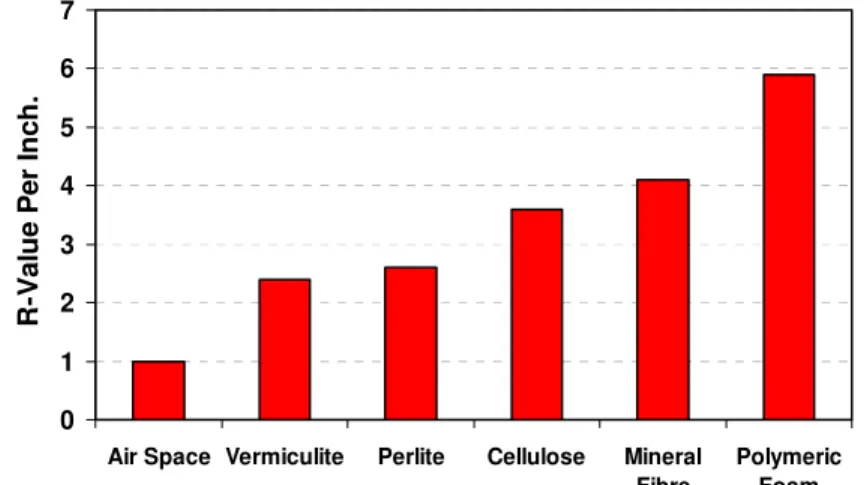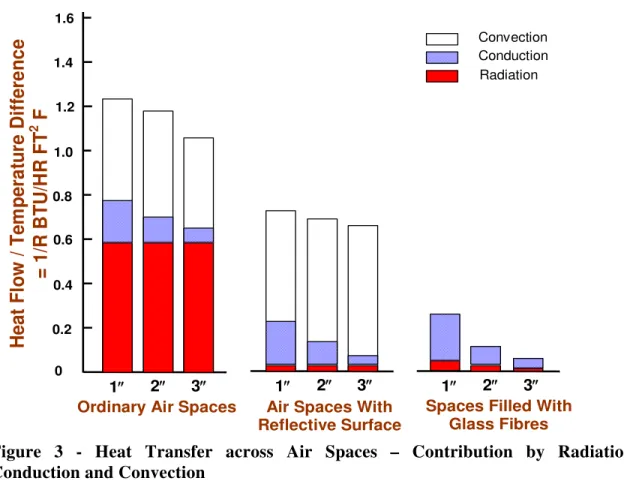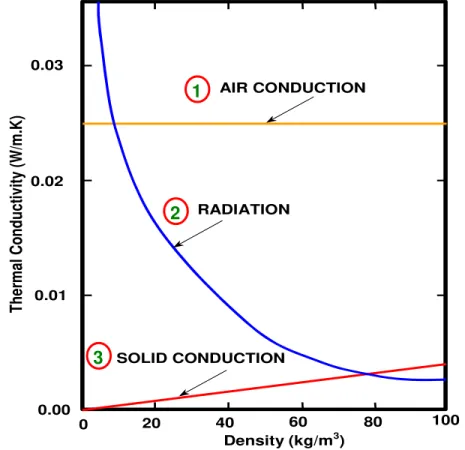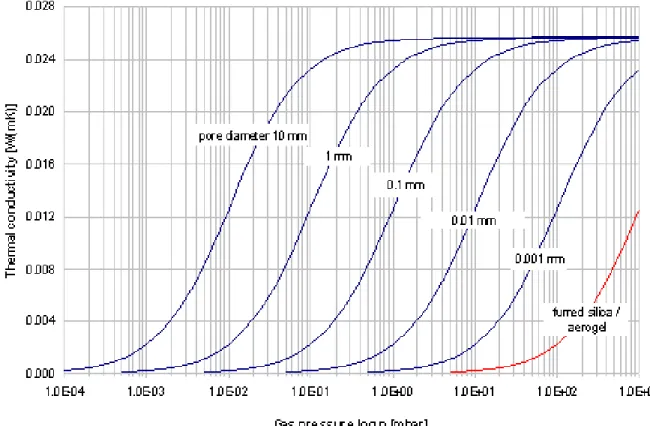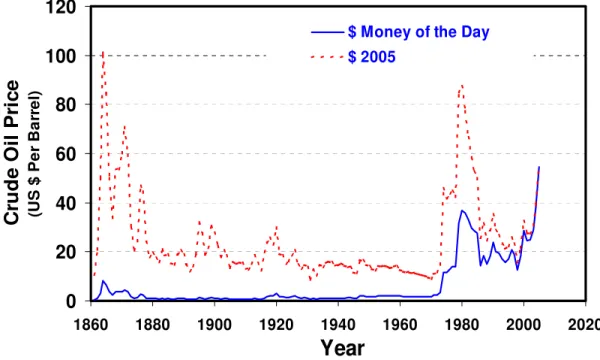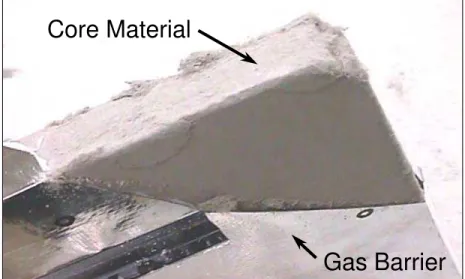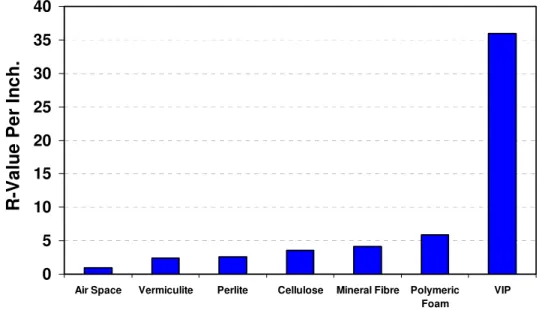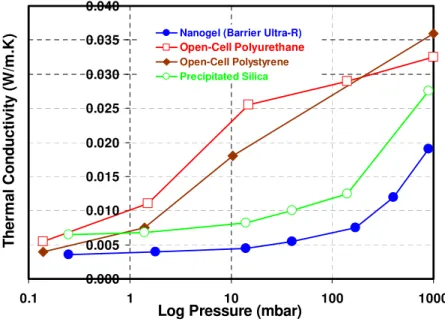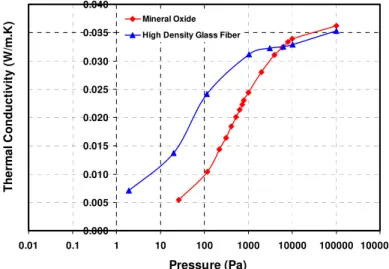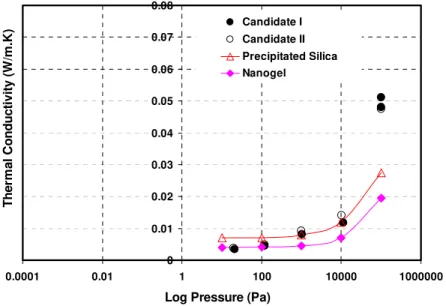Publisher’s version / Version de l'éditeur:
Global Insulation Magazine, October, pp. 9-15, 2006-10-01
READ THESE TERMS AND CONDITIONS CAREFULLY BEFORE USING THIS WEBSITE.
https://nrc-publications.canada.ca/eng/copyright
Vous avez des questions? Nous pouvons vous aider. Pour communiquer directement avec un auteur, consultez la première page de la revue dans laquelle son article a été publié afin de trouver ses coordonnées. Si vous n’arrivez pas à les repérer, communiquez avec nous à PublicationsArchive-ArchivesPublications@nrc-cnrc.gc.ca.
Questions? Contact the NRC Publications Archive team at
PublicationsArchive-ArchivesPublications@nrc-cnrc.gc.ca. If you wish to email the authors directly, please see the first page of the publication for their contact information.
NRC Publications Archive
Archives des publications du CNRC
This publication could be one of several versions: author’s original, accepted manuscript or the publisher’s version. / La version de cette publication peut être l’une des suivantes : la version prépublication de l’auteur, la version acceptée du manuscrit ou la version de l’éditeur.
Access and use of this website and the material on it are subject to the Terms and Conditions set forth at
High performance vacuum insulation panel - research update from Canada
Mukhopadhyaya, P.
https://publications-cnrc.canada.ca/fra/droits
L’accès à ce site Web et l’utilisation de son contenu sont assujettis aux conditions présentées dans le site LISEZ CES CONDITIONS ATTENTIVEMENT AVANT D’UTILISER CE SITE WEB.
NRC Publications Record / Notice d'Archives des publications de CNRC:
https://nrc-publications.canada.ca/eng/view/object/?id=fe5781ce-9178-40d3-b7a1-01f2af0dc945 https://publications-cnrc.canada.ca/fra/voir/objet/?id=fe5781ce-9178-40d3-b7a1-01f2af0dc945
http://irc.nrc-cnrc.gc.ca
H i g h p e r f o r m a n c e v a c u u m i n s u l a t i o n p a n e l –
r e s e a r c h u p d a t e f r o m C a n a d a
N R C C - 4 8 7 0 5
M u k h o p a d h y a y a , P .
A version of this document is published in / Une version de ce document se trouve dans: Global Insulation Magazine, Oct. 2006, pp. 9-15
High Performance Vacuum Insulation Panel –
Research Update from Canada
Author
Phalguni Mukhopadhyaya1
Abstract
Energy efficiency of the built environment greatly depends on the performance of the insulating materials used in the building envelope construction. Vacuum insulation panels (VIPs) offer excellent thermal resistance properties that can enhance the energy efficiency of the insulating systems and provide savings in energy consumption. However, VIP systems are virtually unknown and rarely used for building construction. There is a need to investigate the use of VIPs in various components of building envelopes and their long-term performance. The Institute for Research in Construction (IRC) of the National Research Council (NRC), Canada is investigating a number of fundamental aspects related to the performance and construction of VIPs, which this article discusses. More specifically, it reviews the fundamentals behind the functioning of VIPs and presents results from the investigation into the development of low-cost core materials for VIP construction.
Basic Physics of Heat Transfer
Three heat transfer mechanisms control the insulating capacity of conventional thermal insulation materials (Figure 1): conduction, convection and radiation.
• Conduction occurs when constituent particles of the insulating material are in physical contact and energy is transferred through this contact.
• Convective heat transfer happens as a result of energy transfer by moving constituent particles (i.e., gas or fluid) of the insulating material.
• Radiation takes place due to the emission of electromagnetic waves that transfer energy from the hot emitting object to a cold receiving surface. Unlike conduction or convection, this mode of heat transfer can take place when there is no contact medium (i.e., vacuum) between two objects.
1
National Research Council Canada,1200 Montreal Road,Ottawa, Ontario K1A 0R6, Canada Tel: 613-993-9600, Fax: 613-998-6802, Email: phalguni.mukhopadhyaya@nrc-cnrc.gc.ca
a) Conduction – Heat sfer Through Particle
ct.
(b) Convection – Heat Transfer in a Flowing Medium.
(c) Radiation – Heat Transfer Due to Emission of
Electromagnetic Waves. (
Tran Conta
Figure 1 - Basic Physics of Heat Transfer Mechanisms
High Performance Thermal Insulation
The need to control the heat flow is very critical for the proper functioning of the biological, chemical and mechanical processes that are considered the basic foundation blocks of modern civilization. Historically, applications of thermal insulation for the construction of the built environment always played a very important role for the socio-economic development of our day-to-day life. The very basic form of thermal insulation that had been used for the construction of the built environment is the air space between two layers of construction. With a better understanding of heat transfer mechanisms and the advent of advanced manufacturing technology, the development of high performance insulation has been relatively slow but steady in terms of the increased R-value of the thermal insulation. Each thermal insulation mentioned in Figure 2 has been recognized as high-performance thermal insulation until the next better insulation with a higher R-value is developed.
.
Figure 2 - R Value of Commonly Used Insulating Materials
0 1 2 3 4 5 6 7
Air Space Vermiculite Perlite Cellulose Mineral
Fibre Polymeric Foam R -Valu e Per In ch .
However, enormous potential still exists to develop high-performance thermal insulating materials and systems for the built environment construction. The fundamentals of this development lie within the basics of heat transfer mechanisms through the air space. As shown in Figure 3 (Shirtliffe, 1972), heat flow through ordinary air space is primarily due to convection and radiation. However, the introduction of a reflective surface in the air space can reduce the radiation component of the heat flow to a minimum level. Furthermore, the addition of some fibrous materials (e.g., glass fiber) that restricts the air- flow inside the air space can eliminate the convective heat flow phenomenon almost entirely. 1″ 2″ 3″ 1″ 2″ 3″ 1″ 2″ 3″ Convection Conduction Radiation 0 0.2 0.6 0.8 1.0 1.2 1.4 0.4 1.6 H e a t F lo w / T e m p e rat u re D iff e ren ce = 1/R B T U/H R F T 2 F
Ordinary Air Spaces Air Spaces With
Reflective Surface
Spaces Filled With Glass Fibres
Figure 3 - Heat Transfer across Air Spaces – Contribution by Radiation, Conduction and Convection
Hence, in any conventional insulation material, the three major components of heat flow are air conduction, radiation and solid conduction (Figure 4). The solid conduction and radiation components are functionally related to the density of the insulation materials. However, the air conduction is an independent component and offers a significant opportunity to develop high-performance insulation materials by effectively reducing this component.
The reduction of thermal conduction through air (i.e., air conduction) can be done by replacing the air with a gas that has thermal conductivity that is less than that of air or reducing the air pressure below the atmospheric level inside the insulation material. The first approach is the key for the development of closed-cell foam insulation where the gaseous blowing agents having thermal conductivity lower than air replace the air inside the closed cells. In effect, this approach reduces the air conduction component of thermal conductivity significantly depending on the type of blowing agent used in the closed-cell foam insulation, as shown in Table 1 (Wu and Eury, 2002). The thermal conductivity of most of the commonly used blowing agents is lower than half of the thermal conductivity of air. The researchers at the Institute for Research in Construction (IRC) of the National Research Council (NRC) Canada have been working on the performance of closed-cell foam insulation for more than 15 years now (Kumaran et al., 1989; Bomberg and Kumaran, 1991; Mukhopadhyaya et al., 2004). This research effort has so far culminated to the development of a standard test method for determination of long-term thermal resistance (LTTR) of closed-cell thermal insulating foams (CAN/ULC-S770, 2003).
The second approach — reducing the air pressure inside the insulation material to increase the thermal resistance — is a relatively new area of applied insulation research though the fundamental concept had been known to researchers for a long time (Verschoor et al., 1952). The increase of thermal resistance with the decrease of air pressure is also known to be a function of effective pore size of the insulation material (Kistler, 1935). The thermal conductivity of air decreases with the decrease of effective pore size as shown in Figure 5 (Simmler et al., 2005). Despite having all these fundamental physics known to the researchers, the mass application of this concept for the development of high-performance thermal insulation did not take place until now due to the absence of a suitable vacuum technology to create and maintain very low levels of air pressure inside the insulation material during the service life of the built environment and the cost associated with it. However, recent global consciousnesses about the necessity to conserve energy and the spiralling demand for (Figure 6), and cost of, energy (Figure 7) have refocused attention on high-performance insulation research. The most
notable and comprehensive initiative has been the recently completed IEA/ECBCS Annex 39 project on vacuum insulation panels (VIP), HiPTI — high performance thermal insulation systems (Simmler et al., 2005; Binz et al., 2005). The NRC-IRC participated in this international collaborative research initiative as the Canadian representative; other contributing countries were Switzerland, Germany, France, the Netherlands and Sweden.
0.03 0.02 0.01 20 40 60 80 100 The rm al Co nd uct ivity (W/m .K ) Density (kg/m3) 0.00 0 AIR CONDUCTION RADIATION SOLID CONDUCTION 1 2 3
Figure 4 - Heat Transfer Mechanisms in Conventional (fibres and foam) Insulation
Table 1 – Thermal Conductivity of Blowing Agents
Blowing Agent Thermal Conductivity [kgas @ 25 (°C) mW/m.K]
Blowing Agent Thermal Conductivity [kgas @ 25 (°C) mW/m.K] CFC-11 8.7 Hydrocarbon n-C5 15 HCFC-141b 9.7 HFC-134a 13.6 HCFC-142b 11.5 HFC-245fa 12.2 HCFC-22 11.0 HFC-365mfc 10.6 Hydrocarbon c-C5 12.0 Air 26
Figure 5 – Thermal Conductivity of Air as a Function of Pore Diameter 0 2000 4000 6000 8000 10000 12000 1965 1967 1969 1971 1973 1975 1977 1979 1981 1983 1985 1987 1989 1991 1993 1995 1997 1999 2001 2003 2005
Year
P rim a ry E n e rgy C o ns um pt io n (M illion Tons O ils E q uiv a le nt)Total North America Total S. & Cent. America Total Europe & Eurasia Total Middle East Total Asia Pacific TOTAL WORLD
0 20 40 60 80 100 120 1860 1880 1900 1920 1940 1960 1980 2000 2020
Year
C rude Oil P ric e (U S $ P e r B a rre l)$ Money of the Day $ 2005
Figure 7 – Spiraling Cost of Crude Oil. Source: BP (2006).
Vacuum Insulation Panels
The construction of vacuum insulation panels is strictly based on the physics that the absence or reduction of gaseous pressure inside a porous material increases its thermal insulating potential. Accordingly, a VIP is made with open porous core materials enclosed in an impermeable gas barrier (Figure 8a) and has three major components (Figure 8b).
• A core material imparts mechanical strength and thermal insulating capacity by preventing the free flow of the gas/air molecules thereby reducing the ability of heat transfer through air conduction. Ideal core materials should have an open cell structure, very small pore diameter, resistance to compression due to atmospheric pressure and very high resistance to infrared radiation.
• The gas barrier/facer foil provides the air and vapour-tight enclosure for the core material. The long-term performance of the VIPs is very much dependent on the performance of the gas barrier of facer foil.
• Getter/desiccant is added inside the core material to adsorb residual or permeating atmospheric gases or water vapour in the VIP enclosure. The addition of getter/desiccant increases the performance and longevity of VIPs.
Gas Barrier
Core Material
Figure 8a – Vacuum Insulation Panel
Core Material
Gas Barrier / Facer Foil
Getter / Desiccant
Figure 8b – Schematic Construction of Vacuum Insulation Panel VIP Advantages
The thermal insulating capacity of VIPs is several times (up to 10 times) higher than conventional insulating materials (Figure 9). The panels are particularly useful in places where space is at a premium or where energy demand is high, such as the Canadian North. The higher insulating values of VIPs can effectively reduce the thickness of building envelopes. In cases where the size of framing members is governed by their ability to contain insulation materials rather than by structural strength, the size of insulation cavities can be reduced, with a saving in materials, a maximization of usable
building space and a reduction in waste and recycling needs at the end of the building service life. 0 5 10 15 20 25 30 35 40
Air Space Vermiculite Perlite Cellulose Mineral Fibre Polymeric Foam VIP R -Va lu e Pe r In c h .
Figure 9 - Thermal Resistivity of VIP Compared to Several Common Insulating Materials
VIP Research Update from Canada
Researchers from the IRC have been working on the various issues related to long-term performance and material characterizations during the last five years. These investigations have been carried out either through national or international collaborations.
Laboratory studies on the vacuum insulation panels revealed its remarkable ability to maintain its thermal characteristics and internal pore pressure at a very low level after exposure to high relative humidity (90%) and temperature (32°C) conditions (Kumaran et al., 2004; Mukhopadhyaya et al., 2005; Simmler et al., 2005). The NRC-IRC is now working to find innovative low-cost core materials for vacuum insulation panel construction.
Why Focus on Core Materials?
Long-term thermal performance of the vacuum insulation panel depends primarily on the gas barrier/facer foil and the core material. While the gas barrier helps to maintain the air
and vapour tight environment, the core material provides the insulating capacity. Recent studied at the NRC-IRC have indicated that commercially available vacuum technology and the foil materials provide effective resistance against air and vapour permeation through the gas barrier (i.e., facer) and the facer seam (Mukhopadhyaya et al., 2005; Simmler et al., 2005). However, NRC-IRC studies have also indicated that very slowly but steadily air and/or vapour will penetrate into the core material to raise the internal pore pressure and thus increase the thermal conductivity of the core material (i.e., reducing the thermal insulating capacity of the vacuum insulation panel). The extent of this thermal insulating capacity reduction depends at the initial stage on the capacity of the getter/desiccant material to adsorb residual or permeating atmospheric gases or water vapour inside the VIP enclosure but ultimately on the relationship between pore pressure and the thermal conductivity change of the core material. The most commonly used core materials, as reported in the literature, are glass fiber, cell polyurethane foam, open-cell polystyrene foam, precipitated silica and nanogel (e.g., carbon/silica aerogel). The relationship between the thermal conductivity and the pore pressure for these materials is shown in Figures 10a and 10b (Heinemann et al., 1999; Glacier Bay, nd). It is very obvious from these figures that there is a threshold limit of pore pressure beyond which the thermal conductivity of the core materials increases almost exponentially; for some core materials this threshold value is as low as around 10 Pa and for others it is as high as 10000 Pa. This phenomenon concerning the ability of the open-porous core material to maintain lower thermal conductivity at higher pore pressure is directly related to the pore structure of the material (Tye, 1969; Simmler et al., 2005). Core materials with smaller open pores have the greater ability to maintain lower thermal conductivity at higher pore pressure (Figures 10a and 10b). For this reason, precipitated silica, fumed silica and nanogel materials with micro or nano-porous structure maintain a very low vacuum-level thermal conductivity characteristic almost all the way up to a pressure level of 10000 Pa, unlike glass fiber, open-cell polyurethane foam and open-cell polystyrene foam. Incidentally, nano-porous thermal insulating core materials are much more expensive than purely micro- or macro-porous materials. This is not because the basic materials required for the construction of nano-porous material are expensive but the manufacturing process to impart the nano-porous open-cell structure is very cost
intensive. Quite naturally, the expensive core material is one of the main reasons behind the higher cost of vacuum insulation panels that offer a satisfactory long-term service life of the building envelope.
To overcome this cost barrier for the mass application of vacuum insulation panels in the building industry, NRC-IRC researchers are engaged in a research project that investigates the development of a low-cost core material for the vacuum insulation panel.
Figure 10a – Change of Thermal Conductivity of Core Material with the Pore Pressure. Source: Heinemann et al. (1999).
0.000 0.005 0.010 0.015 0.020 0.025 0.030 0.035 0.040 0.0001 0.01 1 100 10000 1000000 Pressure (Pa) Ther m al Conduct ivi ty ( W m -1 K -1 ) Glass Fiber Polyurethae Foam Polystyrene Foam Precipitated Silica Fumed Silica 0.000 0.005 0.010 0.015 0.020 0.025 0.030 0.035 0.040 0.1 1 10 100 1000
Log Pressure (mbar)
The rm a l C on duc ti v ity ( W /m .K
) Nanogel (Barrier Ultra-R)
Open-Cell Polyurethane
Open-Cell Polystyrene
Precipitated Silica
Figure 10b – Change of Thermal Conductivity of Core Material with the Pore Pressure. Source: http://www.glacierbay.com/vacpanelinfo.asp
Investigation on Core Materials at NRC-IRC
The NRC-IRC has recently developed a test apparatus, called a vacuum-guarded hot plate or VGHP (Figure 11) that can characterize the thermal conductivity of open porous insulating materials at various pressure levels starting from 1 Pa to 100,000 Pa (atmospheric). Initial thermal measurements using the VGHP apparatus at various pressures on traditional mineral oxide fiberboard and high-density glass fiberboard are shown in Figure 12. These results indicate comparable trends and values reported for similar materials in the literature (Heinemann et al., 1999; Simmler et al., 2005).
Fixed End Vacuum Enclosure
Cold Plates
Main Guarded Heater Stand
Figure 11 – NRC-IRC’s Vacuum Guarded Hot Plate (VGHP) Apparatus
0.000 0.005 0.010 0.015 0.020 0.025 0.030 0.035 0.040 0.01 0.1 1 10 100 1000 10000 100000 1000000 Pressure (Pa) The rm a l C onduc ti v it y ( W /m .K ) Mineral Oxide
High Density Glass Fiber
More recently, NRC-IRC researchers have developed two new candidates — potentially low-cost core materials — using locally available traditional insulating materials and inexpensive manufacturing techniques that can bring down the cost of the VIP significantly. While research on these core materials continues, initial results depicting the relationship between the pore pressure and the thermal conductivity are shown in Figure 13, which draws a comparison between the thermal properties of traditionally expensive core materials (precipitated silica and nanogel) and the newly developed low-cost core materials (candidates I and II) at the NRC-IRC. Although at atmospheric pressure level (100,000 Pa) the thermal conductivity values of candidates I and II are much higher than the precipitated silica and nanogel, up to the 10,000 Pa pressure level, thermal conductivity values are very comparable with precipitated silica or nanogel. Hence, candidates I and II are potentially attractive materials for the development of low-cost vacuum insulation panels. The NRC-IRC researchers are working on these new candidate materials for further development and refinement, and the detailed outcome will be published in due course.
0 0.01 0.02 0.03 0.04 0.05 0.06 0.07 0.08 0.0001 0.01 1 100 10000 1000000
Log Pressure (Pa)
Th er m a l C ond uct iv it y ( W /m .K ) Candidate I Candidate II Precipitated Silica Nanogel
Concluding Remarks
1. From theoretical and practical points of view and with the effective vacuum technology available at this moment, vacuum insulation panels (VIPs) offer a great new opportunity for the global thermal insulation industry.
2. Use of VIPs in the building envelope industry can significantly cut down the operational energy consumption for the built environment and material use for the building envelope construction.
3. Current research activities at the NRC-IRC indicate the strong possibility to develop low-cost core materials necessary to produce relatively cheaper vacuum insulation panels for the construction industry.
Acknowledgments
The financial helps provided by the Climate Change Technology Initiatives (CCTI), Canada Mortgage and Housing Corporation (CMHC), Natural Resources Canada (NRCan), and Kingspan Insulated Panels for the NRC-IRC’s research on VIPs are highly appreciated. The author would also like to acknowledge the invaluable contribution of Nicole Normandin, Kumar Kumaran, Roger Marchand, David van Reenen, and John Lackey in the high-performance thermal insulation research at the NRC-IRC.
References
1. Binz, A., A. Moosmann, G. Steinke, U. Schonhardt, F. Fregnan, H. Simmler, S. Brunner, K. Ghazi, R. Bundi, U. Heinemann, H. Schwab, H. Cauberg, M. Tenpierik, G. Johannesson and T. Thorsell. 2005. Vacuum Insulation in the Building Sector - Systems and Applications (Subtask B). IEA/ECBCS Annex 39, pp. 1-134.
2. Bomberg, M.T. and M.K. Kumaran. 1991. “Evaluation of Long-Term Thermal Performance of Cellular Plastics Revisited.” ASTM Special Technical Publication, 1116, Symposium on Insulation Materials: Testing and Applications (Gatlinburg, TN, USA, October 10, 1991), Philadelphia, PA: The American
Society for Testing and Materials, pp. 123-141. (ISBN: 0803114206), (NRCC-35950) (IRC-P-3197 ASTM-STP-1116).
3. BP. 2006. Statistical Review of World Energy Web site. June. <www.bp.com/statisticalreview>. Accessed August, 2006.
4. CAN/ULC-S770. 2003. “Standard test method for determination of long-term thermal resistance of closed-cell thermal insulating foams,” Underwriters' Laboratories of Canada, 7 Underwriters Road, Toronto, Ontario M1R 3B4, Canada.
5. ECBCS (Energy Conservation in Buildings and Community Systems). nd. Annex 39 High Performance Thermal Insulation Systems. <www.ecbcs.org/annexes/annex39.htm>. Accessed August, 2006.
6. Glacier Bay, Inc. nd. Web page. <www.glacierbay.com>. Accessed August, 2006.
7. Heinemann, U., R. Caps and J. Fricke. 1999. “Characterization and Optimization of Filler Materials for Vacuum Super Insulations.” Vuoto scienza e tecnologia 28(1-2): 43-46, ISSN 0391-3155.
8. Kistler, S.S. 1935. “The Relationship between Heat Conductivity and Structure in Silica Aerogel.” Journal of Physical Chemistry 39: 79.
9. Kumaran, M.K., M.T. Bomberg, R.G. Marchand, M.R. Ascough and J.A. Creazzo. 1989. “A Method for Evaluating the Effect of Blowing Agent Condensation on Sprayed Polyurethane Foams.” Journal of Thermal Insulation 13 (October): 123-137. (Also published in CFCs and the Polyurethane Industry: Vol 2 : (A Compilation of Technical Publications, 1988-1989)), (NRCC-35473) (IRC-P-3106).
10. Kumaran, M.K., P. Mukhopadhyaya, J. Lackey, N. Normandin and D. van Reenen. 2004. “Properties of Vacuum Insulation Panels: Results from Experimental Investigations at NRC Canada.” Joint NSC (Taiwan)/NRC (Canada) Workshop on Construction Technologies, Taipei, Taiwan, pp. 147-156.
11. Mukhopadhyaya, P., K. Kumaran, J. Lackey, N. Normandin and D. van Reenen. 2005. “Long-Term Thermal Resistance and Use of Vacuum Insulation Panel in Buildings.” 10th Canadian Conference on Building Science and Technology, 2005, Ottawa, Canada.
12. Mukhopadhyaya, P., M.T. Bomberg, M.K. Kumaran, M. Drouin, J.C. Lackey, D. van Reenen and N. Normandin. 2004. “Long-Term Thermal Resistance of Polyisocyanurate Foam Insulation with Gas Barrier.” IX International Conference on Performance of Exterior Envelopes of Whole Buildings, Clearwater Beach, Florida, December, 2004, pp. 1-10. (NRCC-46881). <http://irc.nrc-cnrc.gc.ca/pubs/fulltext/nrcc46881/>.
13. Shirtliffe C.J. 1972. “Thermal Resistance of Building Insulation.” CBD-149. Institute for Research in Construction, National Research Council, Ottawa, Canada.
14. Simmler, H., S. Brunner, U. Heinemann, H. Schwab, K. Kumaran, P.
Mukhopadhyaya, D. Quénard, H. Sallée, K. Noller, E. Kücükpinar-Niarchos, C. Stramm, M. Tenpierik, H. Cauberg and M. Erb. 2005. Study on VIP-Components and Panels for Service Life Prediction of VIP in Building Applications (Subtask A). IEA/ECBCS Annex 39, pp. 1-157.
15. Tye, R.P. (ed.). 1969. Thermal Conductivity. Vol. I. London and New York: Academic Press, SBN: 12-705401-4.
16. Verschoor, J.D., P. Greebler and H.J. Manville. 1952. “Heat Transfer by Gas Conduction and Radiation in Fibrous Insulation.” Transactions of the American Society of Mechanical Engineers 74: 961-968.
17. Wu, J. and S. Eury. 2002. “HCFC and HFC Alternative Blowing Agents.” PU China, April 2002. © Arkema Inc.
